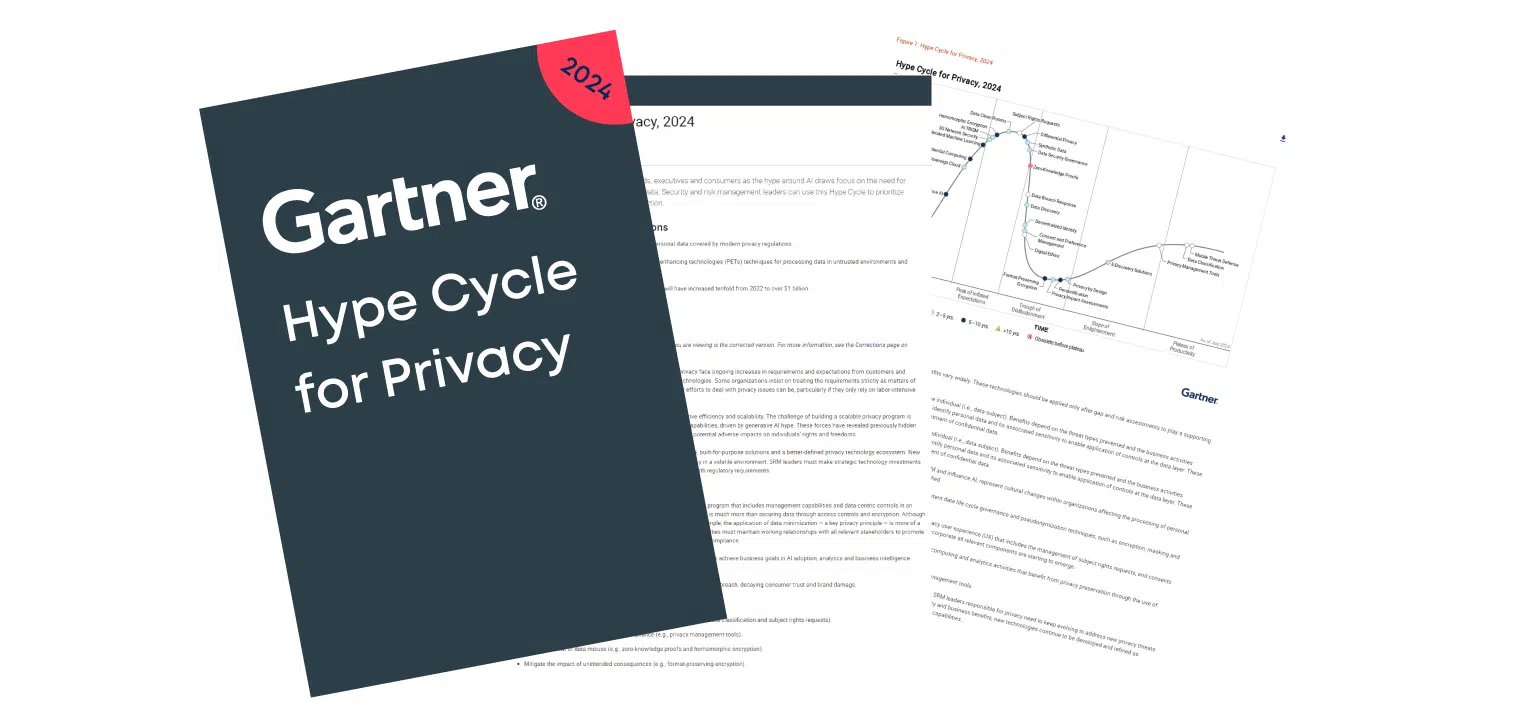Leveraging Hype Cycles for strategic business decisions
Posted: September 10, 2024
The rapid evolution of tech trends and innovations can make it challenging for businesses to keep up. One powerful tool that tech CEOs can use to navigate this complex landscape are the Gartner Hype Cycles, providing valuable insights into the maturity, adoption, and business impact of various innovations, helping leaders make informed decisions. Here’s a detailed look at how you can use Hype Cycles to inform your business decisions effectively.
Understanding the Gartner Hype Cycles
The Gartner Hype Cycle is a graphical representation of the lifecycle stages a technology goes through from conception to maturity and widespread adoption. It is divided into five distinct phases:
- Innovation trigger: This phase marks the introduction of a new technology or innovation. Early publicity triggers significant interest, but there are often no usable products yet. Initial proof-of-concept stories and media interest generate considerable excitement.
- Peak of inflated expectations: During this phase, the hype builds up, and early successes (and failures) are reported. Some companies take action, while many do not. The technology is often pushed to its limits, leading to unrealistic expectations.
- Trough of disillusionment: Interest wanes as experiments and implementations fail to deliver on the hype. Producers of the technology shake out or fail. Investments continue only if the surviving providers improve their products to the satisfaction of early adopters.
- Slope of enlightenment: More instances of how the technology can benefit the enterprise start to crystallize and become more widely understood. Second- and third-generation products appear from technology providers. More enterprises fund pilots; conservative companies remain cautious.
- Plateau of productivity: The real-world benefits of the technology are demonstrated and accepted. Tools and methodologies are increasingly stable, and the technology becomes viable for mainstream adoption. The technology’s broad market applicability and relevance are clearly paying off.
Using Hype Cycles to guide product strategy
Evaluating market penetration
One of the key advantages of using Hype Cycles is the ability to evaluate market penetration. Each innovation in the Hype Cycle includes an estimate of current market penetration, helping you understand your position in the market and the opportunity ahead. For instance, if an innovation has low market penetration, it might be an ideal opportunity for startups or less mature tech providers to enter the market. This insight allows businesses to strategically time their market entry and maximize their chances of success.
Planning multiyear roadmaps
Hype Cycles are invaluable for planning multiyear roadmaps. By understanding where an innovation is on the Hype Cycle, you can plan your product and go-to-market strategies accordingly. For example, if an innovation is in the Trough of Disillusionment, it might be wise to focus on improving the product and preparing for the Slope of Enlightenment, where adoption starts to pick up again. This strategic planning helps ensure that your business is ready to capitalize on emerging opportunities as they arise.
Targeting the right customers
Another significant advantage of using Hype Cycles is the ability to target the right customer segments based on their readiness to adopt new technologies. Early adopters are more likely to take risks on new innovations, while the early majority will wait until the technology has proven its value. By aligning your marketing and sales efforts with the appropriate customer segments, you can improve your chances of successful adoption and market penetration.
Adjusting marketing strategies
The phase of the Hype Cycle can also inform your marketing strategies. During the Peak of Inflated Expectations, it’s crucial to manage customer expectations and prepare for potential disillusionment. Conversely, during the Slope of Enlightenment, you can leverage customer success stories to build credibility and drive adoption. This adaptive approach to marketing ensures that your messaging resonates with your target audience at each stage of the technology lifecycle.
Monitoring competitors
Understanding where your competitors are investing can provide strategic insights. If they are heavily investing in an innovation that is still in the early stages, it might indicate a long-term play. Conversely, if they are focusing on technologies in the Plateau of Productivity, they might be looking for short-term gains. By monitoring competitor activity through the lens of the Hype Cycle, you can better anticipate market movements and adjust your strategies accordingly.
Cassie mentioned in 8 hype cycles
By leveraging the insights provided by the Gartner Hype Cycle, tech CEOs can make more informed decisions about product development, market entry, and customer targeting to aid in navigating the complexities of technology adoption and ensure that your business remains competitive and innovative.
Cassie is featured in nine different Hype Cycles, and we are pleased to make them available for your review:
- Hype Cycle for Privacy, 2024
- Hype Cycle for Digital Advertising, 2024
- Hype Cycle for Digital Marketing, 2024
- Hype Cycle for Banking Experience, 2024
- Hype Cycle for Legal, Risk, Compliance and Audit Technologies, 2024
- Hype Cycle for Human Services in Government, 2024
- Hype Cycle for Local Government, 2024
- Hype Cycle for Digital Government Services, 2024
- Hype Cycle for Healthcare Providers, 2024
If you would like to access a complimentary copy of any of the Hype cycles please get in touch.


